Theme Parks & Themed Entertainment
Is DAK’s Beastly Kingdom DOA? — Part 3
In this three part series from early 2000, Jim Hill looks at Disney’s Animal Kingdom and the unfortunate series of events that led up to the park — and the company — losing a land, many talented Imagineers, and worst of all: guests.
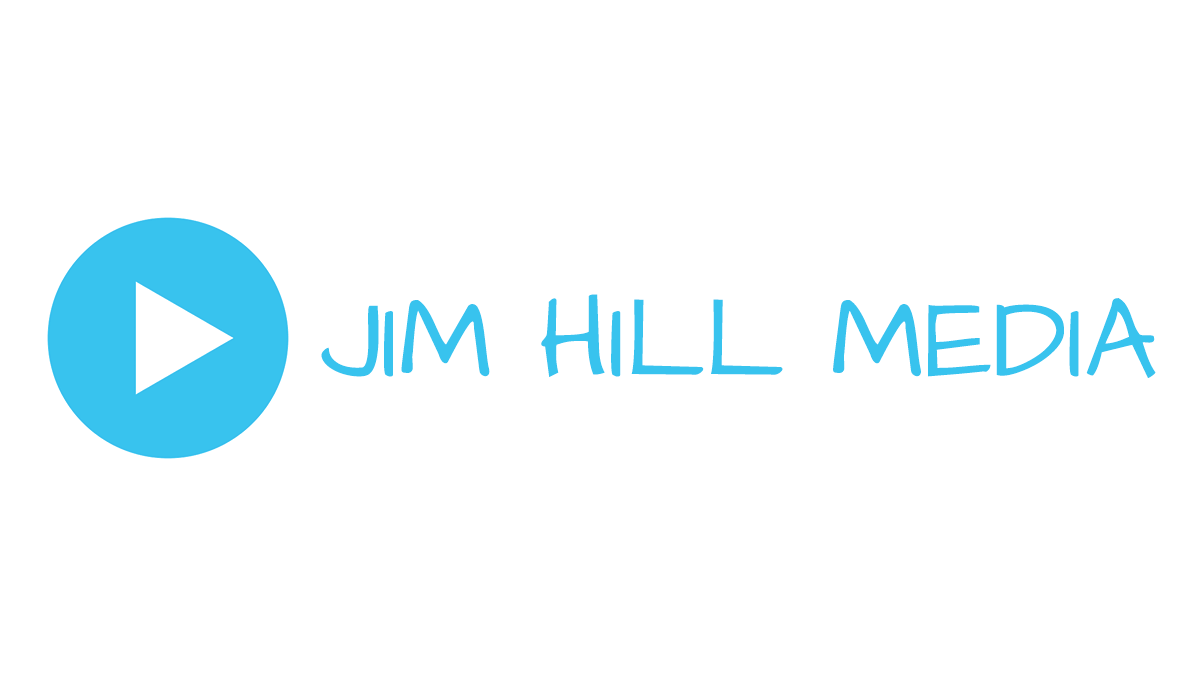
December 1998. Everyone at Walt Disney Imagineering (WDI) is abuzz with news about Universal Studios expansion plans for its Florida property.
“I’ve heard that — on opening day — they’re going to have three mega-coasters up and running.”
“Well, I’ve heard that their ‘Spiderman’ attraction is going to blow the doors off ‘Star Tours’ and ‘Body Wars.'”
“That — plus ‘Jurassic Park – The Ride,’ that ‘Dudley Do-Right’ flume thing as well as the ‘Popeye’ raft ride. This new Universal park sound better than anything we’ve got in Florida.”
Were these Imagineers frightened at the thought of all these great attractions being built in a theme park just down the street from WDW?
Hell no. The folks at WDI were thrilled that Seagrams was spending a reported $2 billion to remake their Universal Studios Florida theme park into a Disney quality resort. Why? Because that meant that the Mouse would finally have some serious competition in Orlando.
You see, Disney CEO Michael Eisner is a very competitive guy. He hates to lose — at anything. If attendance at WDW started to noticeably slip due to the Mouse losing customers to Universal’s new theme park, Michael would have to do something. Eisner’s enormous ego just wouldn’t be able to handle the idea of Disney being No. 2 in the Orlando market.
So he’d turn to the Imagineers and say: “Make the best attractions you can.”
Not “Make the best attraction you can on a limited budget.” (i.e.: WDI’s recent controversial rehab of Epcot’s “Journey into Imagination” ride. During its three months of operation, the revamped version of that Future World attraction racked up more guest complaints than most shows produce in a year.)
Not “Make the best attraction you can with minimal changes to the pre-existing ride building.” (i.e.: The Magic Kingdom’s “Buzz Lightyear’s Space Ranger Spin” actually runs its ride vehicles along the very same track and layout the building’s previous tenants — Delta’s “Dreamflight” and the unsponsored “Take Flight” — used.)
Not “Make the best attraction that reflects the sponsor’s agenda” (i.e.: Any exhibit you’ll find inside either version of “Innoventions.”)
Just “Make the best attractions you can.” Period.
And WDI would absolutely love to hear Michael Eisner say this. Because — for years now — they’ve been developing ideas for absolutely killer theme park attractions, only to be told by Disney Company senior management that ” Gee, we’d love to build that … but it’d be too expensive” or “No one else in the industry is doing that” or — worst of all — “We don’t have to try that hard.”
So now — for the first time ever — it appeared that Walt Disney World was going to have some real competition in Florida. And the top guys at the Mouse Works must have been taking Universal’s Islands of Adventure seriously, for — in January 1999 — they ordered WDI to work up a WDW contingency plan.
The purpose of the plan was this: Should Universal’s Islands of Adventure actually begin to seriously nibble away at Disney World attendance levels in 1999, the Mouse wanted a way to quickly recapture those wandering visitors. WDI felt that the easiest way to get folks excited about going back to WDW again was to add a huge new E ticket attraction for each of the four Florida parks. More importantly, they wanted to have each of these rides up and running in time for the kick-off of Walt Disney World’s 30th anniversary celebration in October 2001.
The Magic Kingdom was to have gotten “Fire Mountain,” a state-of-the-art roller coaster themed around story elements from Walt Disney Pictures’ Summer 2001 animated release, “Atlantis.” What would have truly been intriguing about “Fire Mountain” is that it was to have been the world’s first morphing coaster. Visitors would start their ride seated securely in their ride vehicle. At the midway point in the attraction — as “Fire Mountain” erupted — the bottom would have dropped away from their ride vehicle, leaving the riders dangling from above as they zoomed through the rest of the ride.
Over at the Disney-MGM Studios, that park’s signature attraction — “The Great Movie Ride” — would have gotten a massive makeover. In its place, visitors would have been asked to put on 3D glasses before taking a trip through the Chinese Theater’s “Villain Ride.” Here, WDW visitors would have been menaced by three dimensional recreations of Disney’s most famous fiends before the forces of good finally came to their rescue.
Epcot would have had its dated Future World “Horizons” pavilion pulled down to make way for the new “Mission: Space” attraction. This cutting-edge ride would use centrifugal force to give visitors the sensation of being blasted out into space. They would also feel tremendous G-forces pressing them down into their seats as well as a brief moment of weightlessness before their ride vehicle made re-entry.
As for Disney’s Animal Kingdom … well, since it was the least developed of all four of the WDW theme parks, adding just one new attraction wouldn’t have given visitors enough incentive to return to DAK. So the Imagineers opted to go for broke here. They suggested adding a whole new land to Disney’s Animal Kingdom.
Which land? You guessed it, kids. “Beastly Kingdom.”
Disney Management reviewed WDI’s plan in March of 1999 and agreed to put it into action if … and this is a really big “if” here, folks … it could be proven that Universal Studios’ Islands of Adventure was having a significant detrimental effect of WDW’s attendance levels.
So — for the first time in the history of the Walt Disney Company — the Imagineers actually hoped and prayed for a competitor’s theme park to succeed. For — if Islands of Adventure really had an impact on WDW’s attendance — all of their great new proposed attractions would actually make it off the drawing board.
After two months of soft openings, Universal finally did officially open Islands of Adventure (IOA) on May 28, 1999. Just as the Imagineers had hoped, IOA had it all. Three huge roller coasters. Their state-of-the-art “Spiderman” attraction. Three water-based rides (“Jurassic Park – The Ride,” “Dudley Do-Right’s Ripsaw Falls,” and “Popeye’s Bilge Rat Barges”). Everything a modern theme park needs to succeed.
Well … almost everything.
What was missing?
Crowds.
To this day, no one knows quite what went wrong with the launch of Universal Studios’ Islands of Adventure. Some blame the marketing of the new park and resort, which somehow lead the public to believe that IOA wasn’t a whole new theme park, but rather just a new land that had been added to Universal Studios Florida (USF). (This certainly was a popular explanation within the boardroom at Seagrams. They asked for — and received — the resignations of most of USF’s marketing staff.)
Whatever the reason, the crowds just did not come out for IOA during its first year of operation. Universal’s new theme park under-performed in a spectacular manner, drawing less than half the projected number of bodies Seagrams had said would visit its revamped resort in 1999. Worse still, the limited number of visitors IOA got seems to have all been bodies that the new park lured away from its older Florida theme park. Unconfirmed reports suggest that attendance at Universal Studios Florida may have fallen off by as much as 30% during IOA’s first few months of operation.
But worst of all — at least from the Imagineers’ point of view — is that IOA was having virtually no impact on WDW’s theme parks. As the months went by, it became obvious that — in spite of the $2 billion Seagrams had spent — their revamped resort was having little or no effect on Disney World attendance levels.
Without proof that IOA was impacting WDW’s attendance levels, WDI’s ambitious plans for adding a brand new E-Ticket attraction to each of the Disney Company’s Florida theme parks by October 2001 seemed doomed to failure. Sure enough, Walt Disney Imagineering president Paul Pressler called a meeting at WDW’s WDI headquarters earlier this year to announce a radical rethink of the Florida property’s expansion plans.
At this meeting, Pressler said that — since IOA had obviously proven to be a non-threat to WDW attendance levels — there was no reason to go forward with the previously announced aggressive building program. In its place, Paul proposed a significantly spread out schedule as to which Florida Disney theme park got new attractions and when.
Pressler believed that it was now time to prioritize. WDW attraction construction money would be allocated first to whichever Disney theme park in Florida most needed a boost in attendance. That was obviously Epcot, which perpetually had problems drawing visitors back in for return visits. That’s why the Walt Disney Company opted to stage its 15 month-long Millennium celebration inside this Florida park.
Under the new schedule, the first new WDW E-ticket would be built inside on Epcot. “Mission: Space” would still rocket visitors off into the cosmos. Only now these visitors would have to wait ’til 2003 before they got the chance to board Disney’s shuttle simulator.
Next up would be the Disney-MGM Studios’ E-Ticket. However, construction on the “Villain Ride” wouldn’t even begin ’til 2003. Pressler’s plan was to have the “Villain Ride” up and running by May 2004 — just in time for the studio theme park’s 15th anniversary celebration.
After that, “Fire Mountain” would rise up over at the Magic Kingdom in 2006. This volcano-based Adventureland attraction would serve as the centerpiece of WDW’s 35th anniversary celebration.
Then in 2008, Disney’s Animal Kingdom would finally get its new E-Ticket. Just in time for that park’s 10th anniversary, “Beastly Kingdom” would throw open its doors. Visitors would then get to sample the thrills of “Dragon’s Tower” and wander the leafy green maze over at “Quest for the Unicorn.”
Obviously, Imagineer Joe Rohde and his DAK design team were tremendously disappointed with this last bit of news. But Rohde — ever the optimist — tried to stress the positive in this tough situation. “Okay, so it’s going to open 10 years late,” Joe said. “But at least ‘Beastly Kingdom’ will finally be part of Disney’s Animal Kingdom.”
At least, that was the plan … until Eisner got around to visiting Universal Studio’s Islands of Adventure in January 2000.
Eisner and a small entourage quietly toured the park that day, riding most of the major attractions as well as scoping out a lot of the shops and restaurants. After Michael got back to California, he told the Imagineers that he thought that — while IOA wasn’t quite up to Disney standard — the place still looked pretty good.
There was a pause. Then Michael added “But a few of those attractions looked awfully familiar.”
This is where one of the scummier secrets of the theme park industry gets revealed: theme parks regularly steal attraction ideas from one another. Just like in the computer world or the auto industry, industrial espionage is just one of the many ways that theme park companies like Disney, Universal, Six Flags, and the Cedar Fair Corporation try to stay ahead of the competition.
Of course, Disney didn’t help matters by laying off hundreds of Imagineers following the disastrous opening of Euro Disney. Many of these disgruntled former Imagineers walked out the door, carrying with them the plans for the proposed attractions they had been working on when the Mouse let them go.
Among these folks were several Imagineers who had been working on the “Dragon’s Tower” attraction for DAK’s “Beastly Kingdom.” After a few months, these former WDI employees got hired by Universal to work on their proposed second theme park for Florida. They ended up being assigned to work on that park’s “Lost Continent” area.
“You guys got any ideas for attractions for this part of the park?,” their Universal bosses asked.
Indeed they did.
Now, before you get all indignant about the idea of Universal stealing ride ideas from Disney, please keep in mind that the Mouse has also been doing it for years. For example: how do you suppose the Skyway and Monorail ended up in Disneyland? Walt saw similar attractions while touring amusement parks in Europe in the 1950s. He decided to “borrow” the concepts of these rides from those European venues for installation at his Anaheim park.
And — while Tony Baxter is universally recognized as a modern master of Imagineering, having come up with the concepts for such classic Disney theme park attractions as “Big Thunder Mountain Railway” and “Splash Mountain” — employees of Knotts Berry Farm are all too willing to point out the similarities between those attractions and Knotts’ “Calico Mine Train” and “Log Ride.” Given that Baxter has admitted to spending a lot of his free time back in the 1960s when he was a Disneyland employee prowling around Knotts, is it possible that Tony could have — just like his hero, Walt — “borrowed” the concepts for these Knotts attractions to use as the basis for “Big Thunder” and “Splash Mountain?”
Anything’s possible, kids.
Anywho, back to Islands of Adventure … is “Dueling Dragons” an obvious rip-off of “Beastly Kingdom”‘s proposed “Dragon’s Tower” ride? Perhaps. But how can you rip off something that hasn’t actually been built yet?
Some might argue that Universal — being the first theme park company to build a mega-coaster that featured a dragon storyline with a queue area that was themed around a decrepit castle — must now get credit for creating that attraction. Which means Universal effectively owns that ride idea. That would mean that — should Disney ever go forward with their “Dragon’s Tower” attraction idea — the Mouse would now appear to be copying ride ideas from Universal, rather than the other way around.
Never mind that Disney came up with the original idea for a dragon-based coaster. Never mind that Universal may have acquired the concept for their dragon coaster attraction under somewhat questionable circumstances. In the end, all that matters is: Who built the ride first? Since Universal was the first to build a dragon-based coaster, that ride concept now belongs to them.
And — since Eisner didn’t want it to appear as if Disney was stealing ride ideas from Universal — he asked the Imagineers to remove the “Dragon’s Tower” ride from all future plans for “Beastly Kingdom.” But — without the tumble-down burned-out castle (that would have served as “Dragon’s Tower”‘s show building) to serve as the centerpiece for this proposed addition to WDW’s fourth theme park — “Beastly Kingdom” was left without a “weenie,” a strong visual element that would lure people down into this side of the park. Without “Dragon’s Tower,” “Beastly Kingdom” now seemed kind of pointless.
As painful as it might be, Joe Rohde and his Imagineering team now had to face facts. “Beastly Kingdom” — as they had originally planned it — was dead. WDI would now have to abandon all the witty plans they’d come up with for this part of the park and dream up some new attractions for DAK’s east side.
Mind you, there was no time to mourn “Beastly Kingdom”‘s demise. Rohde and his team were too busy fighting with Disney management over their bargain basement expansion plans for DAK’s Dinoland USA. Assuming that — when Disney’s “Dinosaur” movie opens in theaters later this month — this side of the park will see a huge surge of new traffic, Eisner ordered that several lightly themed off-the-shelf carnival-style rides be added to Dinoland USA to increase capacity.
Rohde was said to be furious when he learned of this plan, particularly since WDI had already put together an elegant expansion plan for DAK’s dino area. He’s reportedly particularly enraged that the name that his Imagineering team came up with for a runaway-mine-car-through-an-abandoned-dinosaur-dig ride — the Excavator — for Dinoland USA’s “Phase II” will now be used for a smallish kiddie coaster Eisner is quickly tossing into the area.
Adding to Rohde’s aggravation: DAK’s ‘temporary’ area — Camp Minnie-Mickey — was becoming all the more permanent as each day went by. Exit polls showed that this area’s “Festival of the Lion King” show was the most popular attraction in all of Animal Kingdom. So popular that Disney had to add additional seats to DAK’s “Lion King” theater to increase the show’s capacity. And — with “Lion King III,” another direct-to-video sequel to the original 1994 film, currently in the works — it could now be years before the “Lion King” phenomenon finally fades … leaving all the land around that once-thought-to-be-temporary theater available again for development.
As you can see, Rohde and his Imagineers didn’t have time to moan over “Beastly Kingdom”‘s loss. They’re too busy fighting with Disney Company management, trying to keep Eisner and Co. from ruining the park with their bone-headed cost-cutting maneuvers.
But is “Beastly Kingdom” really dead? At least for the immediate future, it would seem so. Any ambitious plans the Mouse may have had for expansion of Disney’s Animal Kingdom are now completely on hold.
Why for? Because there’s so much other stuff at DAK that’s currently in urgent need of repair. For example: Conservation Station is thought to be a complete disaster. Visitors repeatedly name that area as their least favorite part of Disney’s Animal Kingdom. So the Imagineers are frantically searching for ways to fix up that facility.
And then there’s Kali River Rapids. Though only a year old, the centerpiece attraction for DAK’s Asia area is already falling apart. There are currently so few of that attraction’s original rafts in working condition that visitors often have to wait as much as an hour in line before there’s a raft available for them to board.
But all those Disney unicorn and dragon lovers out there shouldn’t completely lose heart. Long-time Disney theme park observers know it’s wise never to consider a really great concept for a theme park show or attraction completely dead. For the Imagineers have this awful tendency to recycle abandoned ideas.
Consider Disneyland’s long proposed Discovery Bay. Though Tony Baxter hatched the concept for this Jules Verne-meets-Gold Rush-era-San-Francisco Frontierland expansion back in 1977, it wasn’t until 1992 that elements of this proposed Disneyland addition finally turned up in a Disney theme park. Unfortunately for all those US-based Discovery Bay fans, the park that got the land (DiscoveryLand, to be exact) that was inspired by Tony’s concept art was Disneyland – Paris. But some of Discovery Bay did finally make it off the drawing board.
So who knows? Maybe in ten years or so, some Imagineer may come with a clever way to rework the “Dragon’s Tower” storyline. Perhaps that long rumored South American Disney theme park will have a Sleeping Beauty’s castle with a thrill ride — rather than a walking tour — as its main attraction? Maybe this thrill ride will feature a huge AA version of the Maleficent dragon, snarling and breathing fire at riders as they whiz through the attraction’s finale? Stranger things have happened, kids.
Here’s hoping that — some day, in some way — dragons and unicorns turn up in a Disney theme park.
After all, there’s always room for a little more magic in the Magic Kingdom.
Theme Parks & Themed Entertainment
Disney and Macy’s 90-Year Thanksgiving Day Parade Partnership: From Mickey’s First Balloon to Minnie’s Big Debut
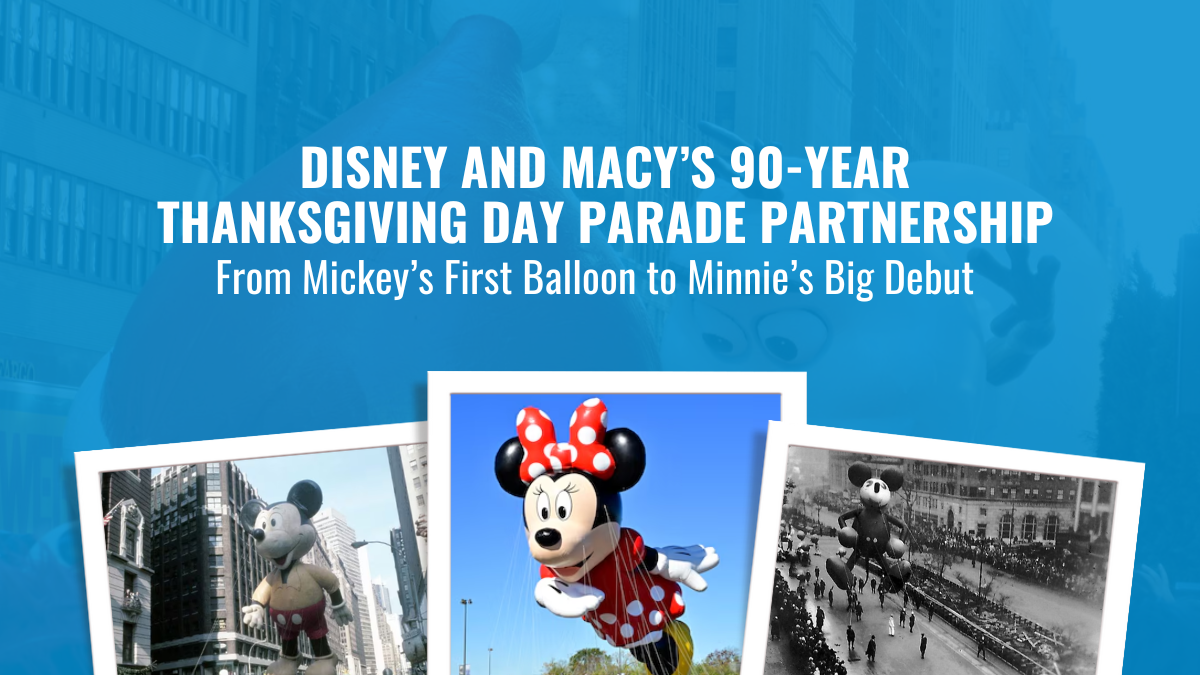
Now, folks, if you’re like me, Thanksgiving just wouldn’t be the same without a coffee, a cozy seat, and Macy’s Thanksgiving Day Parade on the TV. And if you’re really like me, you’re watching for one thing: Disney balloons floating down 34th Street. Ever wondered how Mickey, Donald, and soon Minnie Mouse found their way into this beloved New York tradition? Well, grab your popcorn because we’re diving into nearly 90 years of Disney’s partnership with Macy’s.
The Very First Parade and the Early Days of Balloons
The Macy’s Thanksgiving Day Parade goes way back to 1924, but if you can believe it, balloons weren’t part of the festivities until 1927. That first lineup included Felix the Cat, a dragon, and a toy soldier, all towering above the crowds. Back then, Macy’s had a pretty wild idea to end the parade: they would let the balloons drift off into the sky, free as birds. But this wasn’t just Macy’s feeling generous. Each balloon had a message attached, offering a $100 reward (about $1,800 in today’s dollars) for anyone who returned it to the flagship store on 34th Street.
And here’s where it gets interesting. This tradition carried on for a few years, right up until 1932, when Felix the Cat almost took down a plane flying over New York City! Imagine that—you’re flying into LaGuardia, and suddenly, there’s a 60-foot balloon drifting toward your wing. Needless to say, that was the end of Macy’s “fly away” stunt, and from then on, the balloons have stayed firmly grounded after the parade ends.

1934: Mickey Mouse Floats In, and Disney Joins the Parade
It was 1934 when Mickey Mouse finally made his grand debut in the Macy’s parade. Rumor has it Walt Disney himself collaborated with Macy’s on the design, and by today’s standards, that first Mickey balloon was a bit of a rough cut. This early Mickey had a hotdog-shaped body, and those oversized ears gave him a slightly lopsided look. But no one seemed to mind. Mickey was there, larger than life, floating down the streets of New York, and the crowd loved him.
Mickey wasn’t alone that year. He was joined by Pluto, Horace Horsecollar, and even the Big Bad Wolf and Practical Pig from The Three Little Pigs, making it a full Disney lineup for the first time. Back then, Disney wasn’t yet the entertainment powerhouse we know today, so for Walt, getting these characters in the parade meant making a deal. Macy’s required its star logo to be featured on each Disney balloon—a small concession that set the stage for Disney’s long-standing presence in the parade.
Duck Joins and Towers Over Mickey
A year later, in 1935, Macy’s introduced Donald Duck to the lineup, and here’s where things got interesting. Mickey may have been the first Disney character to float through the parade, but Donald made a huge splash—literally. His balloon was an enormous 60 feet tall and 65 feet long, towering over Mickey’s 40-foot frame. Donald quickly became a fan favorite, appearing in the lineup for several years before being retired.
Fast-forward a few decades, and Donald was back for a special appearance in 1984 to celebrate his 50th birthday. Macy’s dug the balloon out of storage, re-inflated it, and sent Donald down 34th Street once again, bringing a bit of nostalgia to the holiday crowd.
A Somber Parade in 2001
Now, one of my most memorable trips to the parade was in 2001, just weeks after the 9/11 attacks. Nancy and I, along with our friends, headed down to New York, and the mood was something I’ll never forget. We watched the start of the parade from Central Park West, but before that, we went to the Museum of Natural History the night before to see the balloons being inflated. They were covered in massive cargo nets, with sandbags holding them down. It’s surreal to see these enormous balloons anchored down before they’re set free.
That year, security was intense, with police lining the streets, and then-Mayor Rudy Giuliani rode on the Big Apple float to roaring applause. People cheered his name, waving and shouting as he passed. It felt like the entire city had turned out to show their resilience. Even amidst all the heightened security and tension, seeing those balloons—brought a bit of joy back to the city.

Balloon Prep: From New Jersey’s MetLife Stadium to California’s D23 Expo
Each year before the parade, Macy’s holds a rehearsal event known as Balloon Fest at MetLife Stadium in New Jersey. This is where handlers get their first crack at guiding the balloons, practicing with their parade masters, and learning the ropes—literally. It’s an entire production unto itself, with dozens of people rehearsing to make sure these enormous inflatables glide smoothly down the streets of New York on parade day.
In 2015, Macy’s took the balloon show on the road, bringing their Buzz Lightyear balloon out to California for the D23 Expo. I was lucky enough to be there, and watching Buzz get inflated piece by piece in the Anaheim Convention Center parking lot was something to behold. Each section was filled with helium in stages, and when they got around to Buzz’s lower half, well, there were more than a few gas-related jokes from the crowd.
These balloons seem to have a personality all their own, and seeing one like Buzz come to life up close—even outside of New York—had all the excitement and anticipation of the real deal.

Mickey’s Comeback as a Bandleader and Sailor Mickey
After a long hiatus, Mickey Mouse made his return to the Macy’s parade in 2000, this time sporting a new bandleader outfit. Nine years later, in 2009, Sailor Mickey joined the lineup, promoting Disney Cruise Line with a nautical twist. Over the past two decades, Disney has continued to enchant parade-goers with characters like Buzz Lightyear in 2008 and Olaf from Frozen in 2017. These balloons keep Disney’s iconic characters front and center, drawing in both longtime fans and new viewers.
But ever wonder what happens to the balloons after they reach the end of 34th Street? They don’t just disappear. Each balloon is carefully deflated, rolled up like a massive piece of laundry, and packed into storage bins. From there, they’re carted back through the Lincoln Tunnel to Macy’s Parade Studio in New Jersey, where they await their next flight.
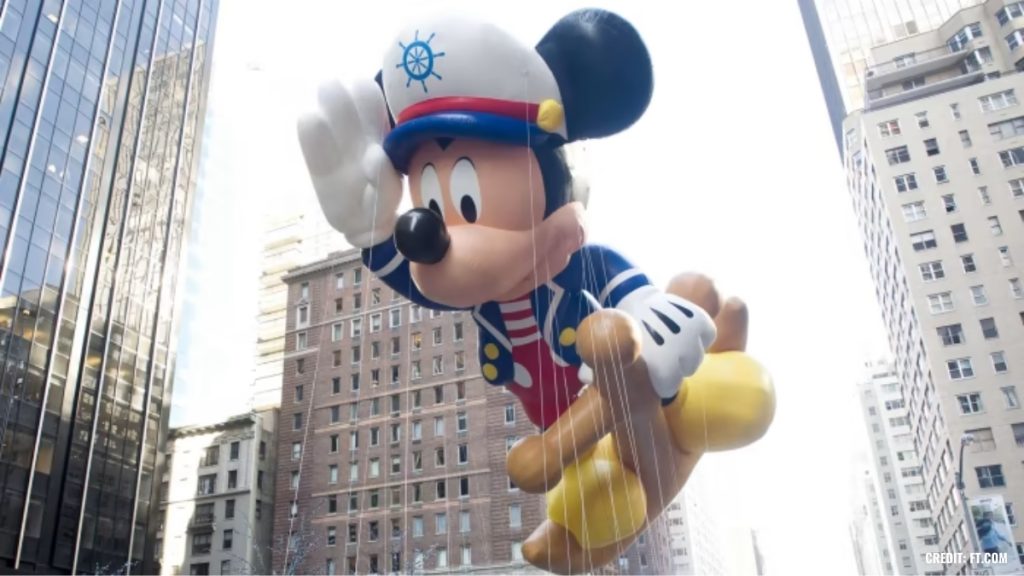
Macy’s Disney Celebration at Hollywood Studios
In 1992, Macy’s took the spirit of the parade down to Disney-MGM Studios in Orlando. After that year’s parade, several balloons—including Santa Goofy, Kermit the Frog, and Betty Boop—were transported to Hollywood Studios, re-inflated, and anchored along New York Street as part of a holiday display. Visitors could walk through this “Macy’s New York Christmas” setup and see the balloons up close, right in the middle of the park. While this display only ran for one season, it paved the way for the Osborne Family Spectacle of Dancing Lights, which became a holiday staple at the park for years to come.
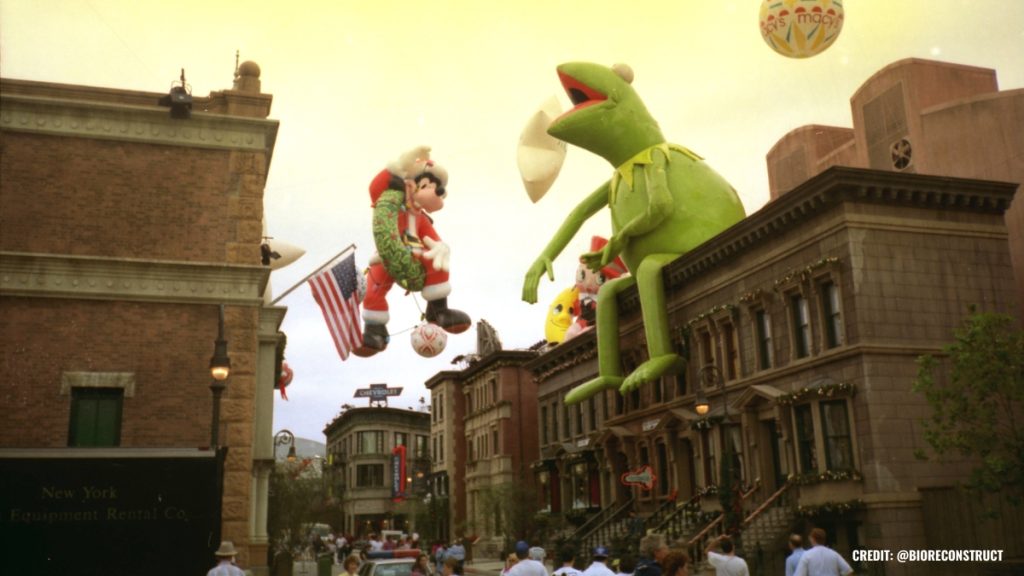
Minnie Mouse’s Long-Awaited Debut in 2024
This year, Minnie Mouse will finally join the parade, making her long-overdue debut. Macy’s is rolling out the red carpet for Minnie’s arrival with special pop-up shops across the country, where fans can find exclusive Minnie ears, blown-glass ornaments, T-shirts, and more to celebrate her first appearance in the Thanksgiving Day Parade.
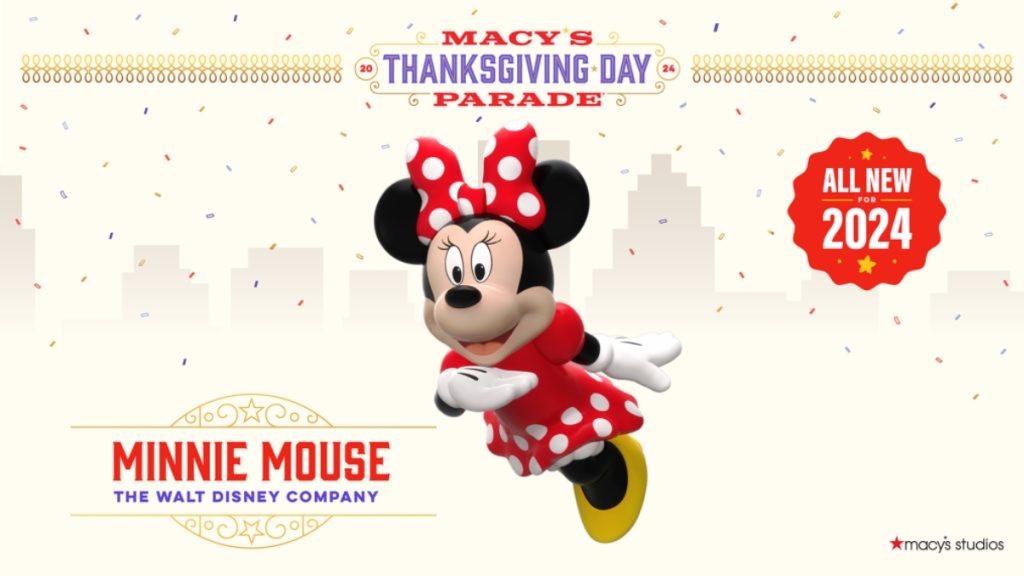
For those lucky enough to catch the parade this year, you’ll see Minnie take her first float down 34th Street, decked out in her iconic red bow and polka-dot dress. Macy’s and Disney are also unveiling a new Disney Cruise Line float honoring all eight ships, including the latest, the Disney Treasure.
As always, I’ll be watching from my favorite chair, coffee in hand, as Minnie makes her grand entrance. The 98th annual Macy’s Thanksgiving Day Parade airs live on NBC, and it’s a tradition you won’t want to miss—whether you’re on 34th Street or tuning in from home.
Theme Parks & Themed Entertainment
Disney’s Forgotten Halloween Event: The Original Little Monsters on Main Street
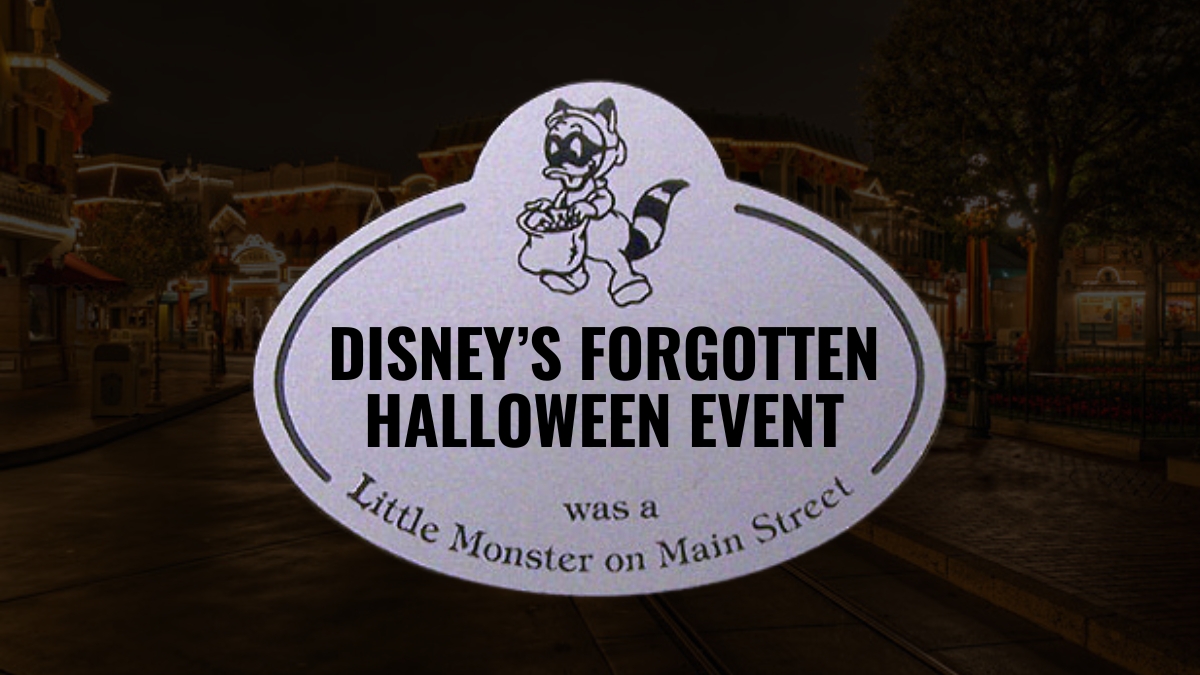
When most Disney fans think of Halloween in the parks, they immediately picture Mickey’s Not-So-Scary Halloween Party at Walt Disney World or the Oogie Boogie Bash at Disneyland Resort. But before those events took over as the must-attend spooky celebrations, there was a little-known event at Disneyland called Little Monsters on Main Street. And its origins? Well, they go all the way back to the 1980s, during a time when America was gripped by fear—the Satanic Panic.
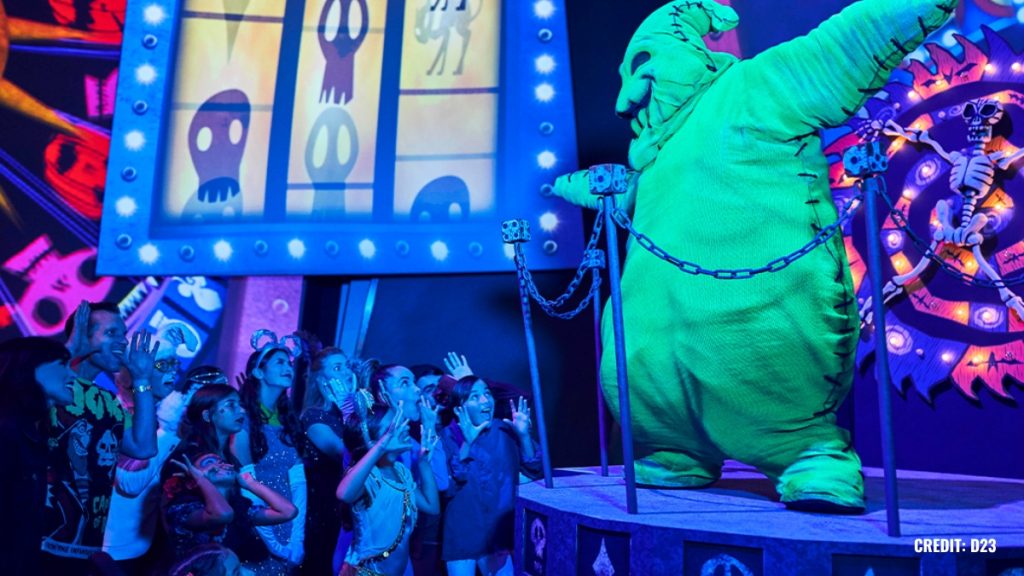
You see, back in the mid-1980s, parents were terrified that Halloween had become dangerous. Urban legends about drug-laced candy or razor blades hidden in apples were widespread, and many parents felt they couldn’t let their kids out of sight for even a moment. Halloween, which was once a carefree evening of trick-or-treating in the neighborhood, had suddenly become a night filled with anxiety.
This is where Disneyland’s Little Monsters on Main Street came in.
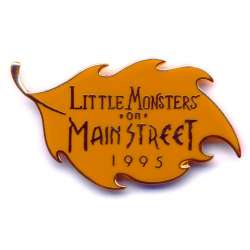
The Origins of Little Monsters on Main Street
Back in 1989, the Disneyland Community Action Team—later known as the VoluntEARS—decided to create a safe, nostalgic Halloween experience for Cast Members and their families. Many schools in the Anaheim area were struggling to provide basic school supplies to students, and the VoluntEARS saw an opportunity to combine a safe Halloween with a charitable cause. Thus, Little Monsters on Main Street was born.
This event was not open to the general public. Only Disneyland Cast Members could purchase tickets, which were initially priced at just $5 each. Cast Members could bring their kids—but only as many as were listed as dependents with HR. And even then, the park put a cap on attendance: the first event was limited to just 1,000 children.
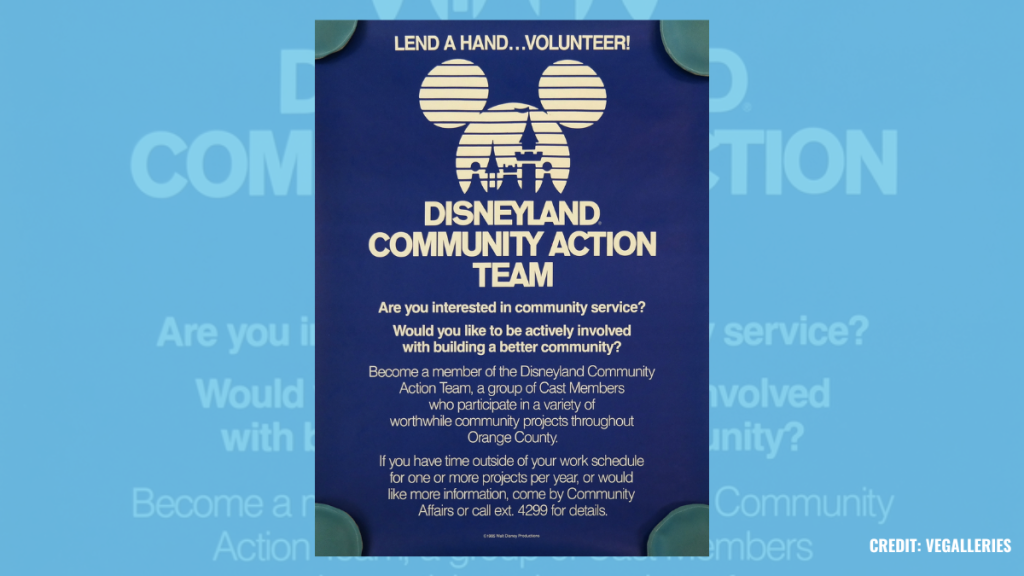
A Unique Halloween Experience
Little Monsters on Main Street wasn’t just another Halloween party. It was designed to give kids a safe, fun environment to enjoy trick-or-treating, much like the good old days. On Halloween night in 1989, kids in costume wandered through Disneyland with their pillowcases, visiting 20 different trick-or-treat stations. They also had the chance to ride a few of their favorite Fantasyland attractions, all after the park had closed to the general public.
The event was run entirely by the VoluntEARS—about 200 of them—who built and set up all the trick-or-treat stations themselves. They arrived at Disneyland before the park closed and, as soon as the last guest exited, they began setting up stations across Main Street, Adventureland, Frontierland, Fantasyland, and Tomorrowland. The event ran from 7:30 to 9:30 p.m., and by the time the last pillowcase-wielding kid left, the VoluntEARS cleaned everything up, making sure the park was ready for the next day’s operations.
It wasn’t just candy and rides, though. The event featured unique entertainment, like a Masquerade Parade down Main Street, U.S.A., where kids could show off their costumes. And get this—Disneyland even rigged up a Cast Member dressed as a witch to fly from the top of the Matterhorn to Frontierland on the same wire that Tinker Bell uses during the fireworks. Talk about a magical Halloween experience!
The Haunted Mansion “Tip-Toe” Tour
Perhaps one of the most memorable parts of Little Monsters on Main Street was the special “tip-toe tour” of the Haunted Mansion. Now, Disneyland’s Haunted Mansion can be a pretty scary attraction for younger kids, so during this event, Disney left the doors to the Stretching Room and Portrait Gallery wide open. This allowed kids to walk through and peek at the Haunted Mansion’s spooky interiors without actually having to board the Doom Buggies. For those brave enough to ride, they could, of course, take the full trip through the Haunted Mansion—or they could take the “chicken exit” and leave, no harm done.
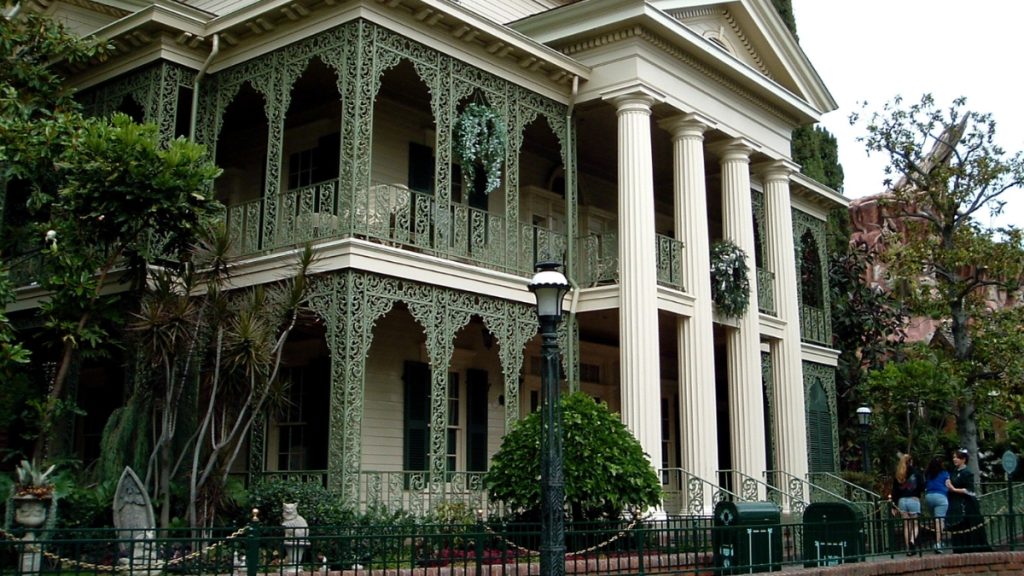
Growing Success and a Bigger Event
Thanks to the event’s early success, Little Monsters on Main Street grew in size. By 1991, the attendance cap had been raised to 2,000 kids, and Disneyland added more activities like magic shows and hayrides. They also extended the event’s hours, allowing kids to enjoy the festivities until 10:30 p.m.
In 2002, the event moved over to Disney California Adventure, where it could accommodate even more kids—up to 5,000 in its later years. The name was also shortened to just Little Monsters, since it was no longer held on Main Street. This safe, family-friendly Halloween event continued for several more years, with the last mention of Little Monsters appearing in the Disneyland employee newsletter in 2008. Though some Cast Members recall the event continuing until 2012, it eventually made way for Disney’s more public-facing Halloween events.
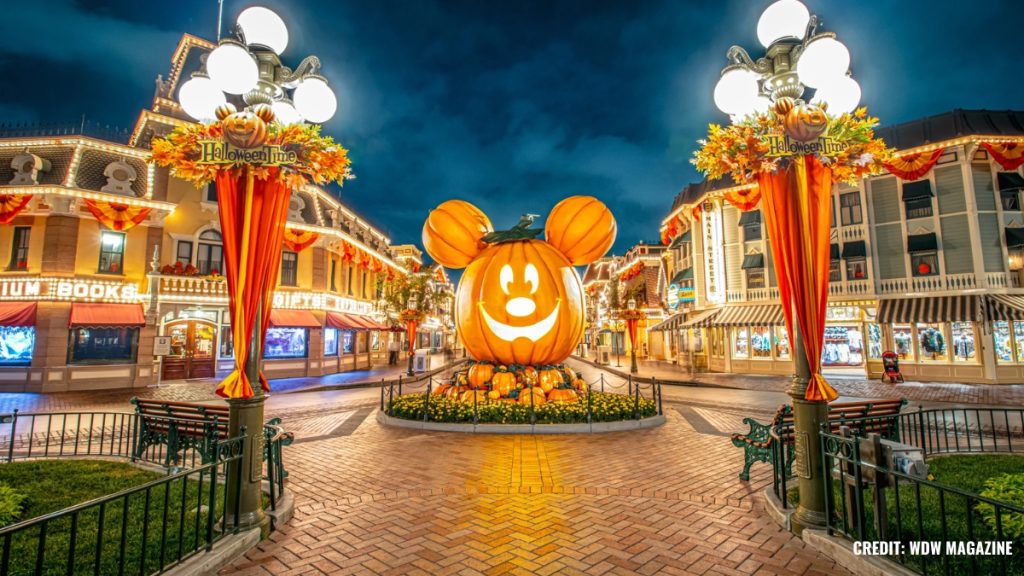
From Little Monsters to Mickey’s Not-So-Scary and Oogie Boogie Bash
Starting in the early 2000s, Disney began realizing the potential of Halloween-themed after-hours events for the general public. These early versions of Mickey’s Halloween Party and Mickey’s Halloween Treat eventually evolved into today’s Mickey’s Not-So-Scary Halloween Party and Oogie Boogie Bash. Unfortunately, this also marked the end of the intimate, Cast Member-exclusive Little Monsters event, but it paved the way for the large-scale Halloween celebrations we know and love today.
While it’s bittersweet to see Little Monsters on Main Street fade into Disney history, its legacy lives on through these modern Halloween parties. And even though Cast Members now receive discounted tickets to Mickey’s Not-So-Scary and Oogie Boogie Bash, the special charm of an event created specifically for Disney’s employees and their families remains something worth remembering.
The Merch: A Piece of Little Monsters History
For Disney collectors, the exclusive merchandise created for Little Monsters on Main Street is still out there. You can find pins, name tags, and themed pillowcases on sites like eBay. One of the coolest collectibles is a 1997 cloisonné pin set featuring Huey, Dewey, and Louie dressed as characters from Hercules. Other sets paid tribute to the Main Street Electrical Parade and Pocahontas, while the pillowcases were uniquely designed for each year of the event.
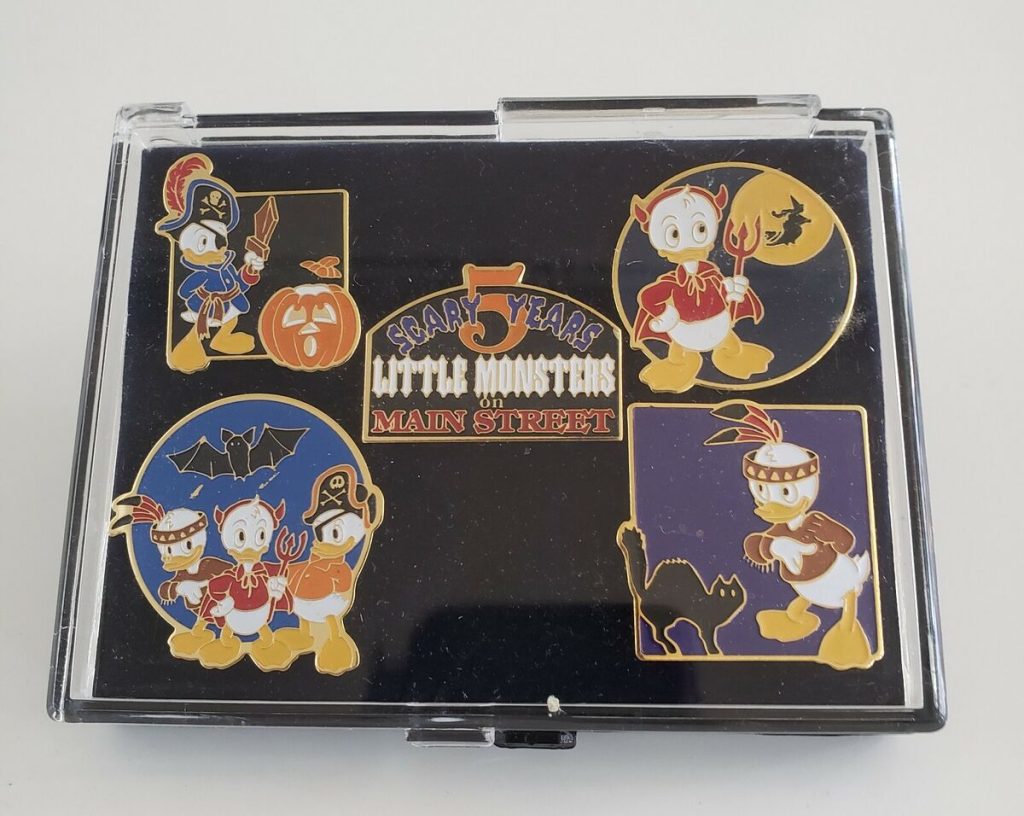
While Little Monsters on Main Street may be gone, it’s a fascinating piece of Disneyland history that played a huge role in shaping the Halloween celebrations we enjoy at Disney parks today.
Want to hear more behind-the-scenes stories like this? Be sure to check out I Want That Too, where Lauren and I dive deep into the history behind Disney’s most beloved attractions, events, and of course, merchandise!
Theme Parks & Themed Entertainment
The Story of Mickey’s Not-So-Scary Halloween Party: From One Night to a Halloween Family Tradition
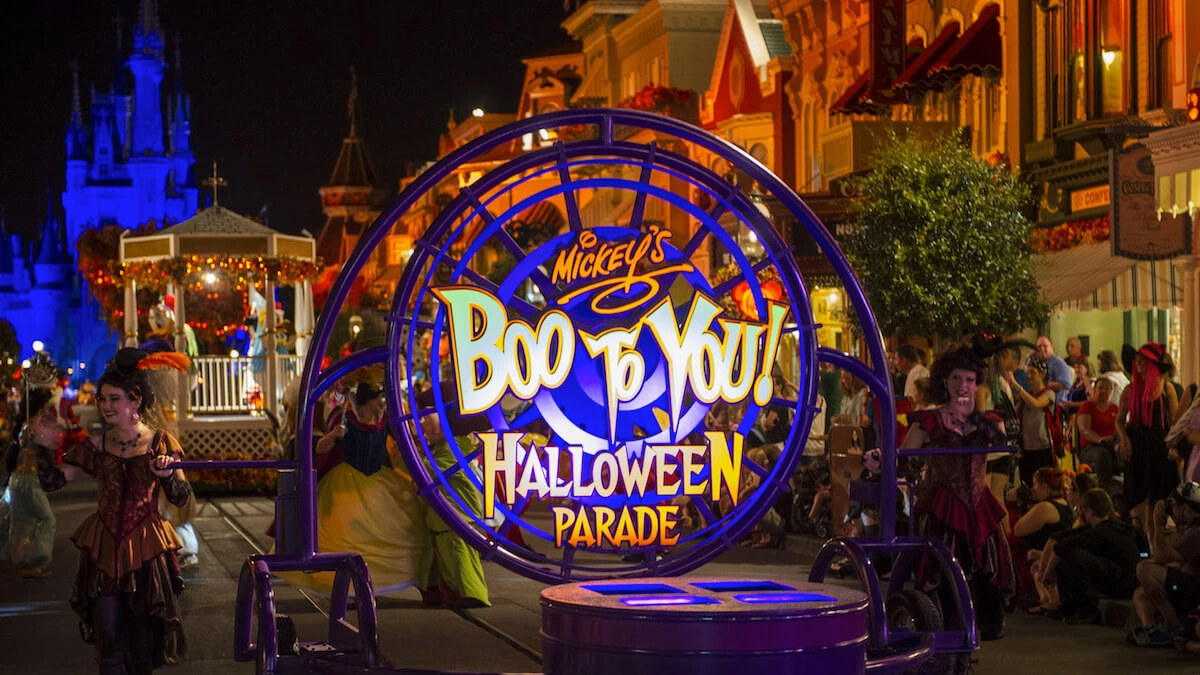
The spooky season is already in full swing at Disney parks on both coasts. On August 9th, the first of 38 Mickey’s Not-So-Scary Halloween Party (MNSSHP) nights for 2024 kicked off at Florida’s Magic Kingdom. Meanwhile, over at Disney California Adventure, the Oogie Boogie Bash began on August 23rd and is completely sold out across its 27 dates this year.
Looking back, it’s incredible to think about how these Halloween-themed events have grown. But for Disney, the idea of charging guests for Halloween fun wasn’t always a given. In fact, when the very first Mickey’s Not-So-Scary Halloween Party debuted on October 31, 1995, it was a modest one-night-only affair. Compare that to the near month-long festivities we see today, and it’s clear that Disney’s approach to Halloween has evolved considerably.
A Not-So-Scary Beginning
I was fortunate enough to attend that very first MNSSHP back in 1995, along with my then 18-month-old daughter Alice and her mom, Michelle. Tickets were a mere $16.95 (I know, can you imagine?), and we pushed Alice around in her sturdy Emmaljunga stroller—Swedish-built and about the size of a small car. Cast Members, charmed by her cuteness, absolutely loaded us up with candy. By the end of the night, we had about 30 pounds of fun-sized candy bars, making that push up to the monorail a bit more challenging.
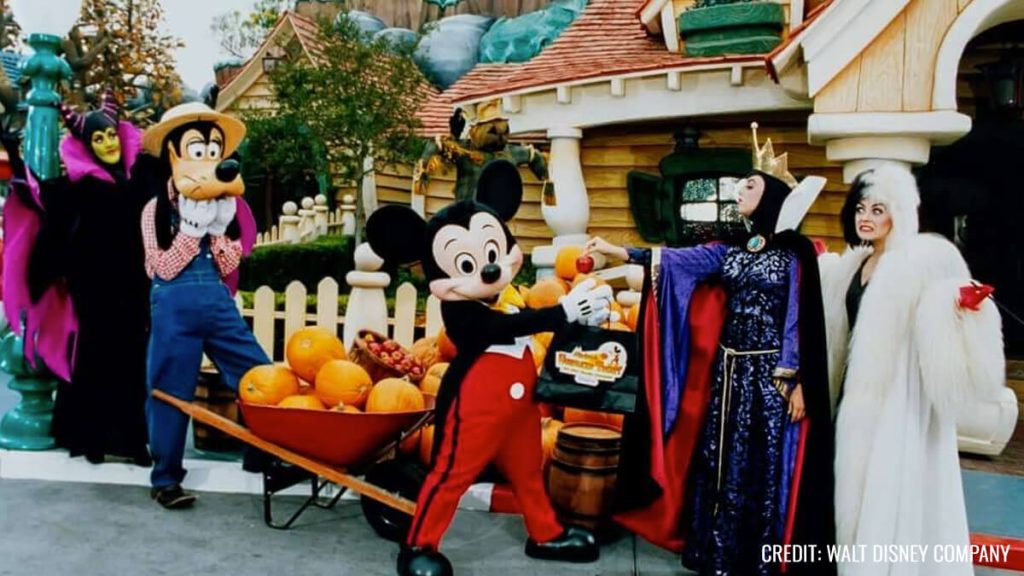
This Halloween event was Disney’s response to the growing popularity of Universal Studios Florida’s own Halloween hard ticket event, which started in 1991 as “Fright Nights” before being rebranded as “Halloween Horror Nights” the following year. Universal’s gamble on a horror-themed experience helped salvage what had been a shaky opening for their park, and by 1993, Halloween Horror Nights was a seven-night event, with ticket prices climbing as high as $35. Universal had stumbled upon a goldmine, and Disney took notice.
A Different Approach
Now, here’s where Disney’s unique strategy comes into play. While Universal embraced the gory, scare-filled world of horror, Disney knew that wasn’t their brand. Instead of competing directly with blood and jump-scares, Disney leaned into what they did best: creating magical, family-friendly experiences.
Thus, Mickey’s Not-So-Scary Halloween Party was born. The focus was on fun and whimsy, not fear. Families could bring their small children without worrying about them being terrified by a chainsaw-wielding maniac around the next corner. This event wasn’t just a Halloween party—it was an extension of the Disney magic that guests had come to expect from the parks.
Disney had some experience with seasonal after-hours events, most notably Mickey’s Very Merry Christmas Party, which had started in 1983. But the Halloween party was different, as the Magic Kingdom wasn’t yet decked out in Halloween decor the way it is today. Disney had to create a spooky (but not too spooky) atmosphere using temporary props, fog machines, and, of course, lots of candy.
A key addition to that first event? The debut of the Headless Horseman, who made his eerie appearance in Liberty Square, riding a massive black Percheron. It wasn’t as elaborate as the Boo-to-You Parade we see today, but it marked the beginning of a beloved Disney Halloween tradition.
A Modest Start but a Big Future
That first MNSSHP in 1995 was seen as a trial run. As Disney World spokesman Greg Albrecht told the Orlando Sentinel, “If it’s successful, we’ll do it again.” And while attendance was sparse that night, there was clearly potential. By 1997, the event expanded to two nights, and by 1999, Mickey’s Not-So-Scary Halloween Party had grown into a multi-night celebration with a full-fledged parade. Today, in 2024, it’s a staple of the fall season at Walt Disney World, offering 38 nights of trick-or-treating, character meet-and-greets, and special entertainment.
Universal’s Influence
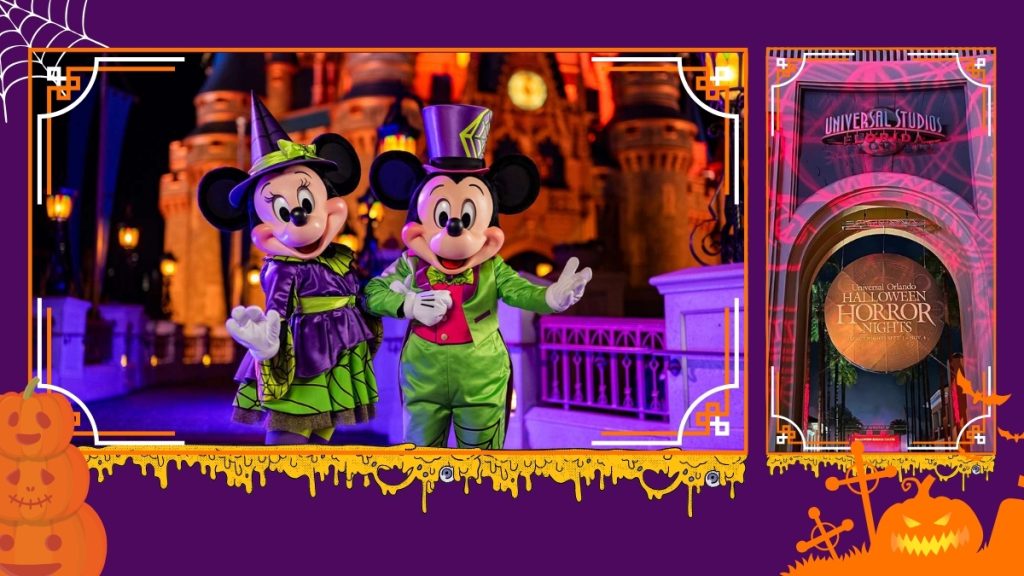
It’s interesting to reflect on how Disney’s Halloween event might never have existed without the competition from Universal. Just as “The Wizarding World of Harry Potter” forced Disney to step up their game with “Star Wars: Galaxy’s Edge,” Universal’s success with Halloween Horror Nights likely spurred Disney into action with MNSSHP. The friendly rivalry between the two parks has continually pushed both to offer more to their guests, and we’re all better off because of it.
So the next time you find yourself trick-or-treating through the Magic Kingdom, watching the Headless Horseman gallop by, or marveling at the seasonal fireworks, take a moment to appreciate how this delightful tradition came to be—all thanks to a little competition and Disney’s commitment to creating not-so-scary magic.
For more Disney history and behind-the-scenes stories, check out the latest episodes of the I Want That Too podcast on the Jim Hill Media network.
-
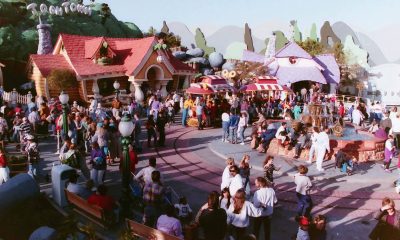
 History10 months ago
History10 months agoThe Evolution and History of Mickey’s ToonTown
-
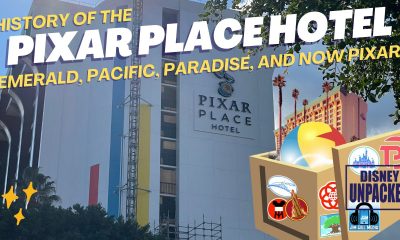
 History11 months ago
History11 months agoUnpacking the History of the Pixar Place Hotel
-
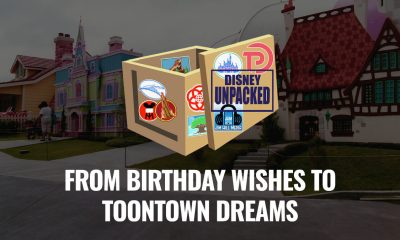
 History11 months ago
History11 months agoFrom Birthday Wishes to Toontown Dreams: How Toontown Came to Be
-
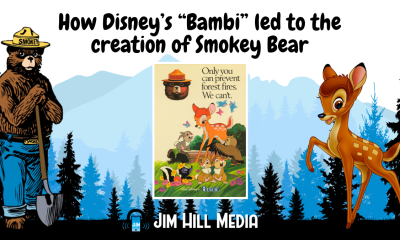
 Film & Movies8 months ago
Film & Movies8 months agoHow Disney’s “Bambi” led to the creation of Smokey Bear
-

 News & Press Releases10 months ago
News & Press Releases10 months agoNew Updates and Exclusive Content from Jim Hill Media: Disney, Universal, and More
-
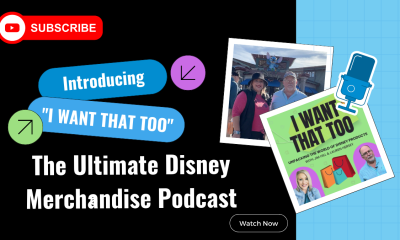
 Merchandise8 months ago
Merchandise8 months agoIntroducing “I Want That Too” – The Ultimate Disney Merchandise Podcast
-
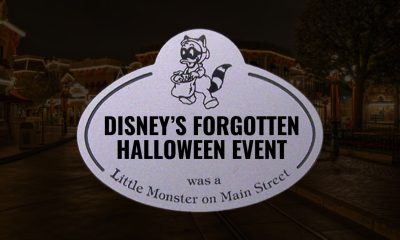
 Theme Parks & Themed Entertainment3 months ago
Theme Parks & Themed Entertainment3 months agoDisney’s Forgotten Halloween Event: The Original Little Monsters on Main Street
-
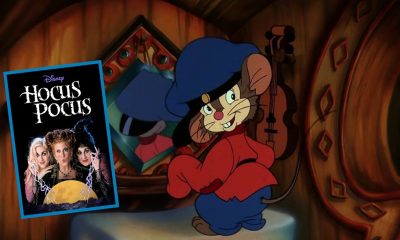
 Film & Movies3 months ago
Film & Movies3 months agoHow “An American Tail” Led to Disney’s “Hocus Pocus”








